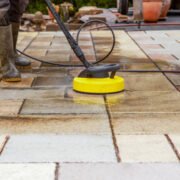In this article, we take a look at two of the most popular flooring methods and the differences between them regarding key aspects.
These two types of flooring options, as far as tiles go, are excellent choices. They are ideal for kitchens, bathrooms, laundry rooms, basements and almost all parts of the house. These tiles which are mainly based out of clay and are kiln-fired are tiles that are very durable and are also very easy to clean.
They are also resistant to damages from water and also very much resistant to stains and daily wear and tear. Both of these tiles work extremely well for both walls as well as floors and they are both available in a very wide range of colors, patterns, sizes and shapes. These tiles are in general much more affordable than other flooring options such as natural stone or also decorative tiles.
Tiles made out of ceramic and porcelain are a very practical choice that are guaranteed to hold up very well for many years to come. If you are in the market for tiles and are trying to decide between the two, it is important to know the difference between ceramic and porcelain tiles. The following few paragraphs will guide you through the many key considerations that have to be made before deciding on a type of tile for your space.

What are the differences between the two?
These two types of tiles are so much alike that they are often very difficult to tell apart and they are also made with very similar materials and processes. There however are some slight differences between the two. In very general terms though, tiles made out of porcelain are harder than tiles made out of ceramic and they also offer much greater flexibility.
Even though they are both made out of clay and some other materials that are also naturally occurring and they are both then fired in a kiln, the clay that is used in the manufacturing process of porcelain tiles are much more refined and also purified. It is also fired at a much greater temperature and pressure as well and this results in a material that is extremely dense and hard.
Porcelain tiles are a type of tile that are proving to be very long-wearing and that is in essence one of the main reasons, they are making such a mark in the industry. Porcelain tiles are also ideal for places where it tends to get very cold and in particular places where freeze/thaw conditions are of concern.
Owing to the fact that this type of tile has a very low moisture absorption rate, porcelain tiles are much less likely to crack and are very much more resistant to stains, almost impervious to it. It is important to know that the term porcelain has become a bit branded but the thing that is worth noting is that not all porcelain tiles are created in the same way and are hence not equal.
Types of the two
These two types of tiles come in a wide variety of forms and they are all suited for different purposes and uses. Even though all tiles do feel tough and hard, there are some tiles that are definitely harder than others. The body of a tile which is sometimes known by the names bisque or biscuit, is made to meet the needs of a specific requirement.
This can be things such as lining a kitchen backsplash or sometimes to cover a bathroom floor. Even though how thick a tile is can often determine how strong it is, other things that come into play in terms of how strong the tile is are the composition of the tiles and also the temperature and duration of the manufacturing process.
The Porcelain Enamel Institute has determined a rating system for tiles that makes it easier to understand which tile is suitable for which areas of the house. The rating of hardness is as follows:
Class 0: The least hard in the list and is suitable for no traffic.
Class 1: Suitable for spaces such as guest baths and other areas of the house that receive light traffic.
Class 2: These are the category of tiles designed for use in interiors where there is a possibility of little abrasion to occur and is suitable for medium traffic.
Class 3: These are pretty high up the ranking and as such can be used in pretty much all parts of the house and is suitable for medium-heavy traffic.
Class 4: Hard enough to be used in light to medium commercial areas and homes as well, these can withstand heavy traffic.
Class 5: These are strong enough to be suitable for use anywhere but are mainly used in stores and other commercial spaces that experience extra-heavy foot traffic.
Make sure that when you are laying the tiles the underlayment has been done properly. In order to prevent chipping and cracking, the tiles must be installed over a very strongly supported subflooring. If the tiles do happen to break at any time in the future, it is recommended that you replace them with new ones rather than trying to repair them. The last thing that is of paramount importance to note is that tile grout can be very difficult to clean if it is left unsealed.
Regardless of what you choose, look for tiles that have a high coefficient of friction. Known that honed finishes offer much more traction than glossy surfaces.
If you are completely sure about porcelain tiles, go for one with a “through body color.” Know that porcelain tiles are a much more difficult DIY project. The way it is made makes it hard to do it by yourself.












